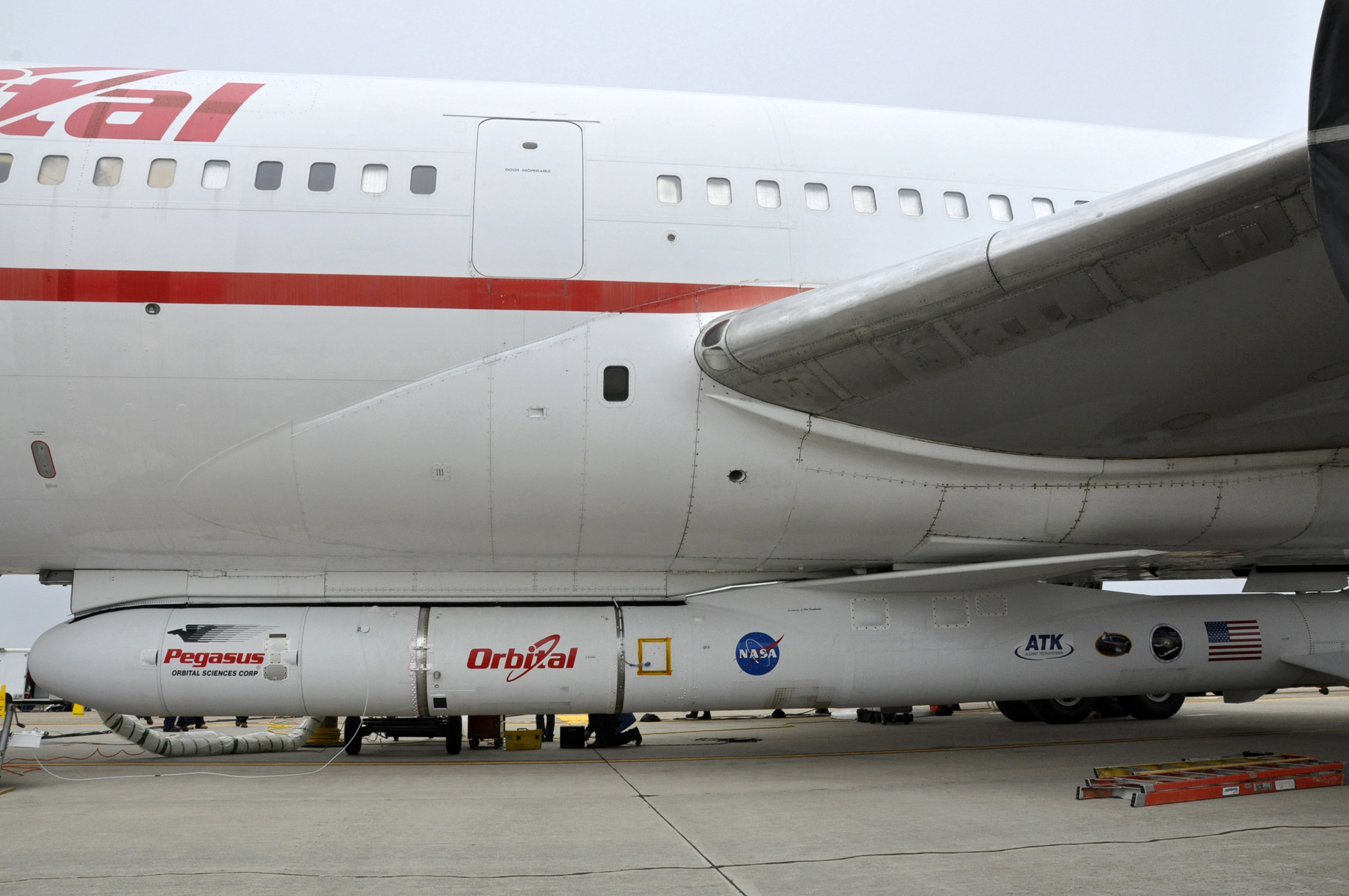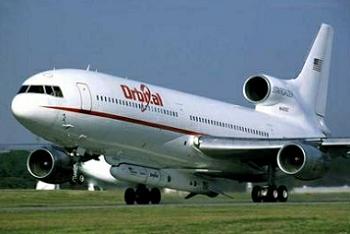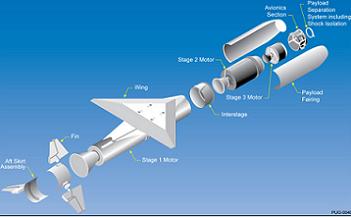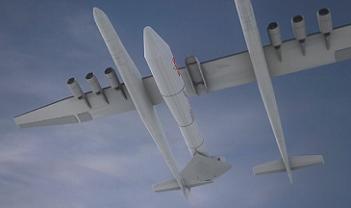Orbital Sciences is one of NASA’s commercial launch partners. Back in April I wrote about their successful launch of the Antares rocket. But the news item that caught my eye this week happened on June 27 and involved the deployment of a satellite using an airborne launch system with a rocket strapped to the underbelly of a commercial jet.
The rocket used was the Pegasus XL and it was carried to a height of 11,900 meters (39,000 feet) by a jet before being released. After 5 seconds the rocket’s first stage motor fired, followed by a second and then a third. On board Pegasus XL was a satellite called IRIS, short for Interface Region Imaging Spectograph, part of NASA’s Small Explorer program and weighing 181 kilograms (400 pounds).
Pegasus XL’s third stage reached orbit and then was jettisoned. The IRIS satellite then unfurled its solar panels to begin its mission to study an area of the Sun’s atmosphere existing between the surface and the corona. This region between 4,800 and 9,600 kilometers (3,000 to 6,000 miles) above the Sun sees temperatures jump from 5,500 Celsius (10,000 Fahrenheit) to 1 million Celsius (1.8 million Fahrenheit) degrees and scientists as of yet cannot explain why this happens.
But it is the launch vehicle that intrigued me as another way for us to send payloads into low-Earth orbit. Orbital’s mated pair includes a 39-year old Lockheed L100 TriStar aircraft called Stargazer, after the fictional ship featured in a Star Trek: The Next Generation episode. The Pegasus XL was attached to Stargazer’s belly as seen in the image below.
Pegasus has a chequered history. The first Pegasus was launched in 1990 mated to a B-52 bomber. Several launches followed, some ending in failure. The rocket then underwent several redesigns (see the rocket deconstructed in the image below) and this latest iteration called Pegasus XL may find itself used for other small payload launches.
But should Pegasus XL not get any more work, Orbital has a next generation version of the rocket up its sleeve. It is called Pegasus II, capable of putting payloads up to 6,100 kilograms (13,500 pounds) into low-Earth orbit. NASA may not be an immediate customer but two commercial space companies, Stratolaunch Systems (seen in the image below in flight with a Pegasus II dropping before igniting) and Scaled Composites‘ White Knight Two, Richard Branson’s launch vehicle for SpaceShip Two are looking to offer air-launch to low-Earth orbit services.
If Stratolaunch succeeds with its air-launch technology it hopes to not just send payloads but humans into low-Earth orbit, and a future version of an Orbital Pegasus may be what puts them there.
And why do we want to do this rather than use ground-launch systems. Because air-launch technology is cheaper which means the cost per kilogram of payload deployed in low-Earth orbit drops dramatically.













Helium balloon supported high altitude launch platforms are safer, less expensive, and more re-usable. This is just one example of a not so new technology that is likely to emerge as government agencies are forced to innovate to due budget constraints.